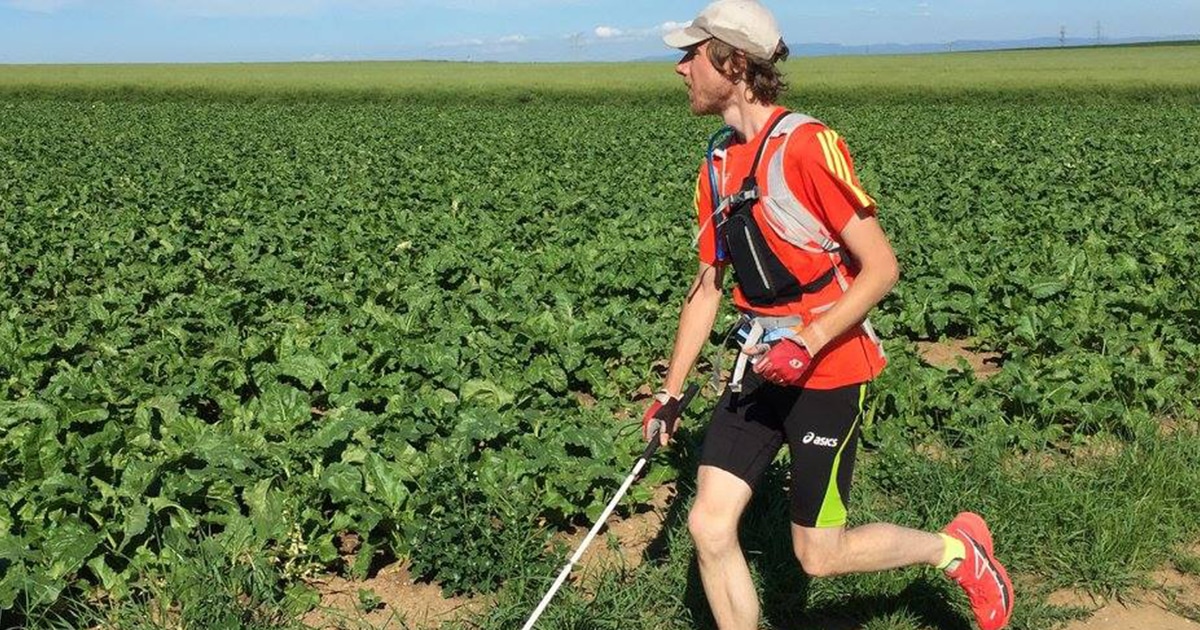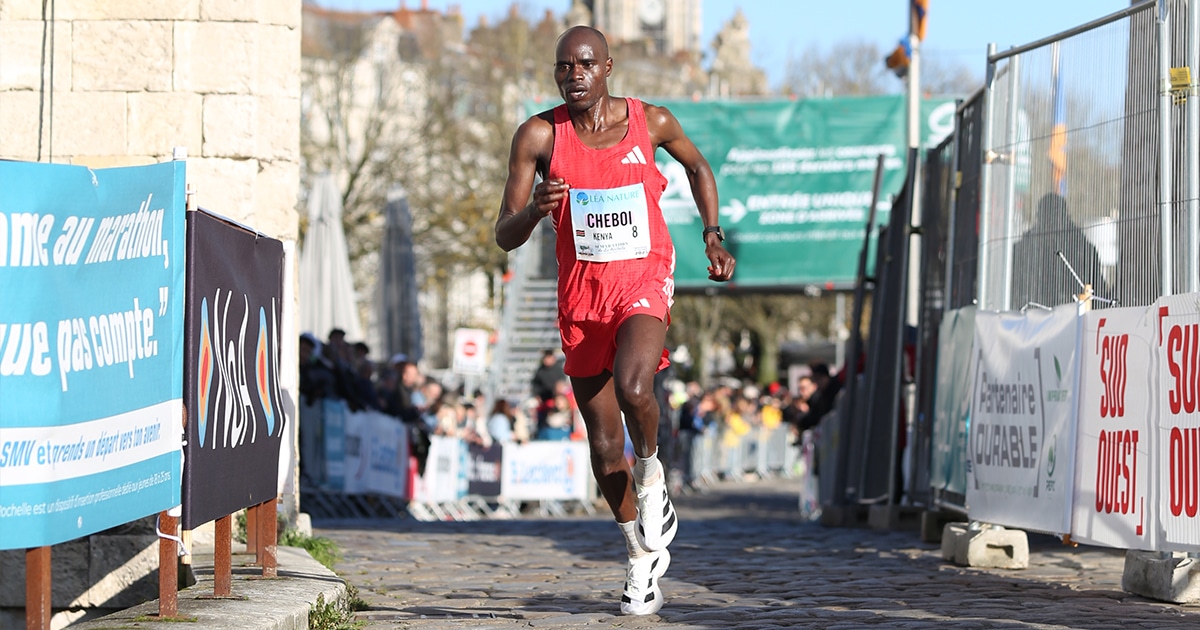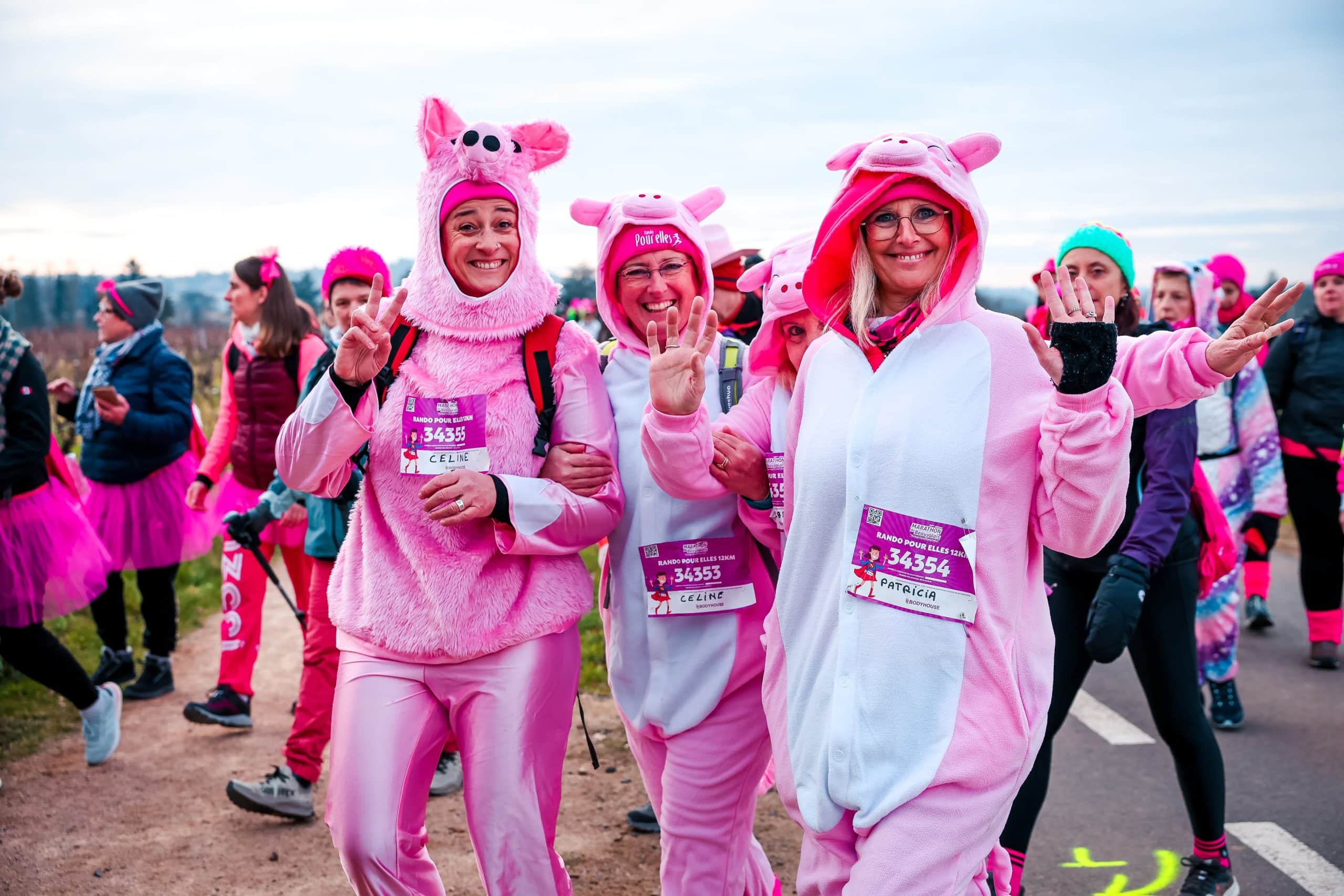Clément Gass, blind runner and world record holder: “You can run a marathon every day after breakfast.”
Blind since birth, a statistician engineer, trail runner, marathoner, and autonomous world record holder… Clément Gass has created his own vocal GPS to run without a guide. From the GR20 in Corsica to the 20 km de Paris, the Alsatian charts his paths as a “living geography”, with a simple philosophy: push his limits without ever losing enjoyment.
An atypical and formidable participant will take on the 20 km de Paris on October 12. A visually impaired runner brimming with audacity, with whom Marathons.com spent nearly 1 hour and 20 minutes in conversation, blending sports testimony, life story, and philosophical reflection. Clément Gass never waited for trails to be marked. A trained engineer and passionate inventor, he has turned his visual impairment into a testing ground. Thanks to his vocal GPS, he runs solo, fully autonomous, from marathons to long mountain crossings. The Lutzelhousois (Bas-Rhin) not only holds the world record for solo marathon running, but has also tackled the most demanding terrains, from the GR20 to the steep slopes of the Vosges, always determined to go where he’s least expected. Along the way, the boy from Schaffhouse-sur-Zorn hasn’t just pushed his own limits by introducing other visually impaired runners to trail running; he has also developed mobility tools with the association Vue du Cœur and shared a philosophy where disability never erases freedom of choice. In this interview, the 38-year-old all-terrain athlete shares his small fears on the trails, the joys of running, his tinkerer-engineer mindset, and his enduring love of discretion, far from the spotlight. A conversation with a runner who challenges preconceptions and makes every stride a conquest of freedom.
| You started running at age 12 in your native Alsace. What vivid memories do you have of those first steps? Of your first race?
I started running to get around. As a blind person, moving independently is difficult. Running is just faster walking: it lets you go farther with the same means of locomotion. My first memory is running after my brother in the supermarket. While our parents shopped, we got bored, so we ran around the aisles, always on the same route. I kept accelerating and ran full-force into a pole. My reaction as a child was: “But it wasn’t there last lap!” It could have traumatized me, but instead it taught me to build precise mental maps of every environment I frequent. Official races came much later, after 20 years, maybe even 25. I had already done small local races, like the 5 km des Châteaux d’Ottrott. Back then, I couldn’t always afford the entry fee, so with my student friends, we sometimes ran with the crowd without bibs, timing ourselves.
| | As a child, you hiked alone with just your cane. How did these experiences shape your proprioception and confidence?
It came very gradually. You can’t ask a blind person to run alone overnight. We start with walking, then fast walking, then slow running on flat, safe terrain: stadiums, lawns, football fields. Then quiet roads, wide country paths. Gradually, you add grass, roots, forest, elevation, rocks… These are years of practice.
| | You compare running to the shift from bicycle to car, in terms of freedom. Can you explain?
Running is the only mode of locomotion I can do without depending on anyone. No permission, no driver, no schedules. I can go out anytime. Over 10 kilometers, walking at 4 km/h versus running at 10 km/h saves a huge amount of time. It’s comparable to the difference between a bike and a car.
“In nature, no one’s there to remind me that I’m blind.”
Clément Gass
| Running alone without a guide gives you a particular freedom. What changes for you?
I started without a guide on familiar terrain. Guides only assisted for races or fast workouts. Otherwise, I ran much more alone. Without a guide, I only depend on my own schedule. It’s also a way to forget my disability. In nature, no one reminds me that I’m blind. Animals don’t either; they fear me as much as they would a sighted person.
| Why didn’t the traditional method with a guide and tether suit you?
I have nothing against it, but it limits freedom. Running alone means being in control. When you’re tethered, the guide decides the path. I need to steer my run, like a living map in my head.
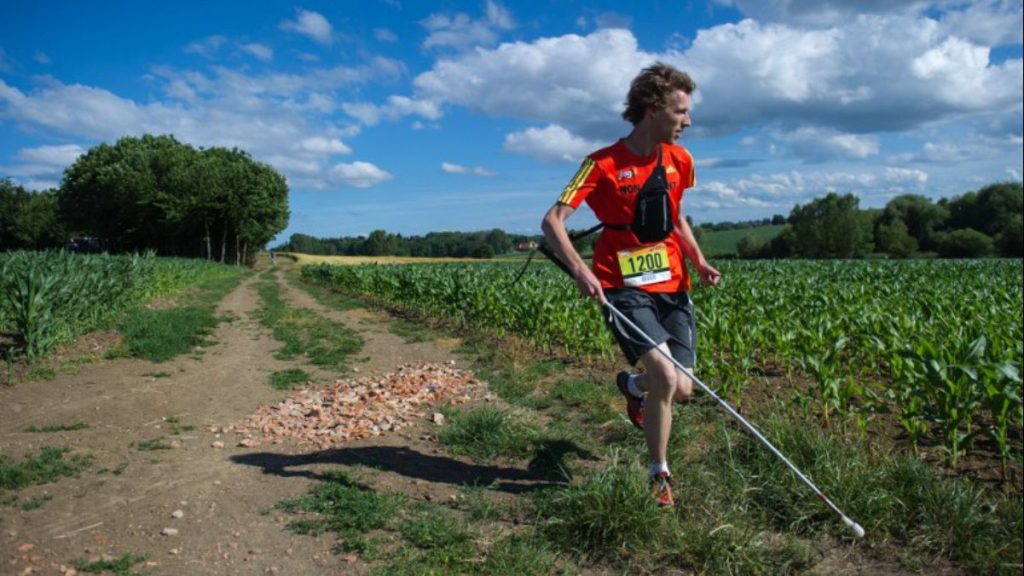
| Did you feel fear during your first solo runs?
Fear is constant, but it’s not panic. It’s maximum vigilance. At any moment, I could trip, leave the path, fall into a hole. My cane anticipates, but it doesn’t cover 100% of the ground. I often step off the path because the difference between the center and the edge isn’t always tactile enough. At a certain pace, it takes a tenth of a second to place a foot wrong, then the other, and suddenly I’m off the trail. In those moments, you have to react immediately. If the left foot slips into the void, the right follows. You have to throw yourself to the side and grab stable ground. Fortunately, in the Vosges, off-trail paths don’t end in 50-meter cliffs. They are steep, unstable slopes, but mostly soil, so you can usually catch yourself.
| In 2015, you co-developed a vocal GPS app. How did this idea come about, and how does it work for a race like the 20 km de Paris?
Originally, the idea came from a researcher. He had developed an app for hiking. I told him all the apps I had tried were useless. I realized his system was better than the others, though imperfect. As an engineer, I worked with him: he on the code, me on ideas and algorithm logic. Gradually, we created a vocal GPS combining GPS, compass, gyroscope, and phone sensors, making it much more precise. You can also customize the course: mark a slope break, a tree trunk, or any hazard noticed during reconnaissance. Next time, I run with confidence: the voice announces danger before I face it. Every 7 seconds, the system tells me the direction and distance to the next key point. For example: “one o’clock, 53 meters, turn at two o’clock.” From the distance between announcements, I know my speed. It’s precise and adaptable, even under effort.
| Have you had technical issues, like a compass failure on your first 27 km trail?
Yes, at the beginning, there were glitches. On that trail, after 12 km, the instructions were wrong. Fortunately, I knew the route and there were other runners. I sometimes took wrong paths, but I always managed to get back on track, either thanks to volunteers or by hearing speakers in the distance. The GPS is a tool, but you must always know how to manage without it.
“That time (4:04 for a marathon) had symbolic value: showing you can run solo, without a guide, and set an official benchmark”
Clément Gass
| You hold the world record for an autonomous marathon for a blind runner (4:04) in Cernay-La-Ville. How did you experience that moment?
For me, it wasn’t a goal in itself, just a consequence. The record matters less than the joy of running in the forest or mountains. But it was symbolic: to show that running alone is possible and to establish an official reference. I hope it encourages other visually impaired runners to try.
| Do you already imagine future innovations to make running even more accessible for the blind?
There’s always room for improvement. If autonomous cars can be guided with extreme precision at high speed, why not a runner? Cost is still an issue: smartphones and apps must remain accessible. I’d love to contribute to new projects, but not alone. Developing an app requires a true team. And it’s not just running: for example, text recognition is still very approximate. It works well on clean, recent paper, but with tables, charts, or handwriting, it’s unusable. There’s a huge field to improve.
| You also crossed Alsace and even the GR20 (180 km in Corsica). Was that harder than a marathon?
The GR20 is much harder than a marathon. Ten days of fatigue, pain, sometimes even a fracture. It’s a mental test above all. A marathon, you could do every day after breakfast.
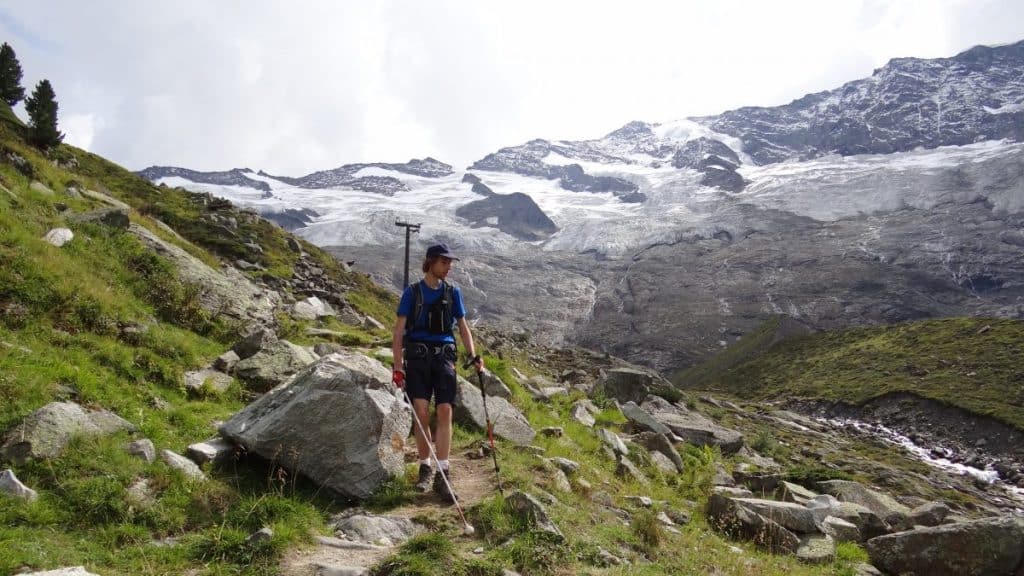
| In 2016, you set a world record over 54 km with 2,020 m elevation in 9:38, still solo. What struck you most about this challenge?
It was probably harder than a marathon. In the mountains, the risk is constant, effort lasts longer, and you are physically tested from start to finish. But it’s also a different kind of pleasure, combining effort and continuous concentration.
| Do you still set performance goals?
Not really in numbers. My goal is to do my best. I don’t run for a specific time, but to progress and push limits. I don’t believe in extreme distance inflation: running 200–300 km with no sleep endangers health. I prefer running 70 km regularly all my life than destroying myself on a single feat.
“I constantly build a mental map of the places I cross.”
Clément Gass
| You often speak of “living geography.” What do you mean?
I constantly build a mental map of the places I cross. Every sound, every relief, every smell becomes a reference. Once I’ve walked a path, I can memorize it and return autonomously. It’s like drawing the terrain in my head, layer by layer.
| You’ve introduced other visually impaired runners to trail running. What does sharing your experience bring you?
First, the simple joy of sharing a passion. The more people, the more laughter! But what touches me most is seeing someone discover they can do what they thought impossible. In the mountains, I sometimes meet lost hikers, and I guide them. It surprises them, because they imagine a blind person would have fewer cues. In reality, when I know a sector well, I sometimes move more surely than sighted people discovering the terrain. It completely reverses perspective: in that moment, there’s no disability. Just people sharing the same space, with strengths and limits.
| You want “autonomous marathon” to be a recognized discipline and your times comparable to sighted runners. How do you envision integrating this into official rankings?
Today, I’m ranked with sighted runners. When I finish 1,000th out of 2,000, I’m neither first nor last, and that makes sense: I’m evaluated in the same race. But why not imagine a parallel category to highlight this practice and attract more participants? I’d like to see para and able-bodied competitions together, like one big celebration. In some sports, like judo, categories are created by weight or age. We could do the same by type of disability. That would be true integration, not parallel worlds.
“You don’t take a ‘handi-train’ to go to a ‘handi-job,’ so why talk about ‘handi-sport’?”
Clément Gass
| What is your view on disability in sports today in France?
In daily life, we all live together. We don’t take a ‘handi-train’ to a ‘handi-job,’ so why say ‘handi-sport’? The term shows the separation that persists. At a high level, competitions are segregated, but in clubs, integration is often natural. There was excitement around the Paralympics, then it quickly faded. Para-sport is still treated as a sideshow. I dream of a system where integration is the norm, like male/female sports. Today, we still organize two separate World Cups, as if the worlds couldn’t overlap.
| In 2024, you carried the Paralympic flame. What did that feel like?
It was a special moment. A way to be integrated into the Olympic movement, even if my practice doesn’t fit usual categories. That day, there were very different profiles, from a middle-schooler in a wheelchair to elite athletes. When they passed me the flame, I truly felt the connection uniting all differences.
| Through the association Vue du Cœur (and Yvoir), you develop mobility tools and support other visually impaired people. What does this bring you personally?
Associative work is above all the satisfaction of making things move, together. Right now, we’re working on a more robust and adapted version of the cane, useful for sports and daily life. Each outing is a testing ground: I try new tips, observe wear, push limits. It takes a lot of mental space, but it makes the project tangible and useful. I’ve been involved for around ten years. It started helping one visually impaired young person, then expanded. Today, it’s still small-scale, which I appreciate: manageable projects, no bureaucratic weight, real daily benefit. And above all, a space to share experiences and progress together.
| If you could share a single piece of advice with young athletes with disabilities, what would it be?
I don’t necessarily feel qualified to tell them what to do. But if I had one piece of advice, it would be to listen to no one… not even me! We all have the same ability to make decisions about our own lives, disability or not. The key is not to let yourself be trapped by norms or prejudices. And you have to learn to see the glass as half full—or even just one-tenth full. Because that one-tenth is already huge: there are more things to explore than a single lifetime would allow. It’s that part, however small, that gives you the drive to move forward.
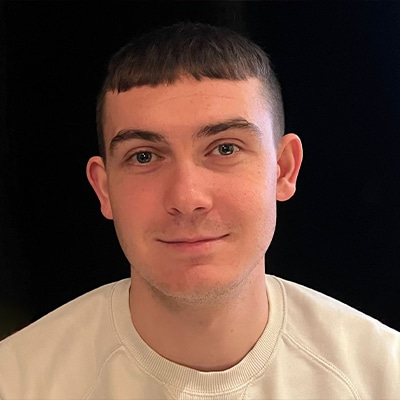
Dorian VUILLET
Journalist
